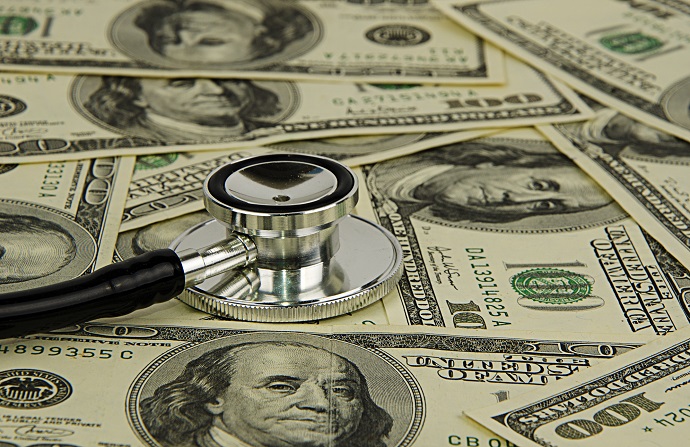Employed Physicians Create Almost $2.4M a Year in Hospital Revenue
Employing physicians can significantly increase hospital revenue, but how much per specialist may indicate how successful value-based care is so far, a report shows.

Source: Thinkstock
- Physicians are the backbone of medical care, but new data from the national physician search and consulting firm Merritt Hawkins shows employed doctors are also major money-makers.
Their seventh survey tracking average annual net hospital revenue physicians in different specialties produce for their affiliated hospitals showed physicians generate an average of $2,378,727 per year on behalf of their affiliated organizations.
Average hospital revenue from employed physicians is up 52 percent compared to the last Physician Inpatient/Outpatient Revenue Survey from 2016.
“The value of physician care is not only related to the quality of patient outcomes,” Travis Singleton, Merritt Hawkins Executive Vice President, stated in an official press release. “Physicians continue to drive the financial health and viability of hospitals, even in a healthcare system that is evolving towards value-based payments.”
The data from almost 100 hospitals and 19 specialties revealed that specialists continue to draw in the most hospital revenue for affiliated organizations. Average hospital revenue from affiliated specialist physicians reached almost $2.5 million in 2018, increasing by 52 percent from $1.6 million in 2016.
Researchers pointed out that the most recent finding is the highest average for specialists ever recorded in the seven years Merritt Hawkins has done the survey.
Four specialists drove the increase in average hospital revenue from employed physicians. Invasive cardiologists, neurosurgeons, orthopedic surgeons, and cardiovascular surgeons produced more than $3 million in net hospital revenue for their affiliated organizations in 2018, the survey found.
The newly-added specialist, cardiovascular surgeons, generated the greatest amount of hospital revenue with $3,697,916 per year, followed by invasive cardiologists with $3,484,375 per year, neurosurgeons with $3,437,500 per year and orthopedic surgeons with $3,286,764 per year.
Specialists have produced the highest hospital revenue in six of the seven years of the Physician Inpatient/Outpatient Revenue Survey. However, primary care physicians are not far behind their peers.
Overall, primary care physicians, which include those in family practice, general internal medicine, and pediatrics, generated over $2.1 million a year in hospital revenue for their affiliated organizations in 2018.
Average hospital revenue generated by primary care physicians also increased 52 percent compared to the 2016 report, which clocked $1.4 million in revenue for family medicine doctors, pediatricians, and general internists.
The most recent average is also the greatest amount ever recorded in the seven years the survey has been conducted, researchers noted.
“As these numbers indicate, physicians typically generate considerably more in ‘downstream revenue’ than they receive in the form of salaries or income guarantees. This is particularly true of primary care physicians,” researchers explained. “Though hospitals and other employers have been shown to lose money on physician salaries in some cases, they often recoup these loses from the downstream revenue physicians generate.”
Hospitals and health systems are acquiring or adding primary care practices to their organization as they engage in more value-based and population health arrangements. Accountable care organizations (ACOs) and other value-based models require a large primary care base to manage the care of large patient populations under global budget payments tied to value and/or quality.
“Employed primary care physicians may be more likely to direct tests, therapies and other services ‘in-house’ to their hospital or hospital system employer, rather than to outside resources such as radiology groups or labs, which may have been their pattern when they were in independent practice,” the report stated.
“They also may direct more hospital admissions to the hospital or system that employs them than they might if in independent practice and hence generate more revenue for their affiliated hospitals. Though this behavior pattern was not apparent in the 2016 survey, it may be one reason for the high revenue figures generated by primary care physicians in the 2019 survey.”
However, value-based care models have yet to “inhibit the revenue generating power of physician specialists,” the report stated.
A value-based healthcare system emphasizes preventative care and promotes population health management, researchers explained. Therefore, a value-based system would limit the use of services performed by specialists, like invasive procedure, because fewer patients would develop the conditions that require the services.
“These results suggest that value-based delivery models have not reduced the volume and/or the cost of physician specialty care, and that such efforts may be trumped by both the continued prevalence of fee-for-service payment models and, in particular, by increased utilization of physician services driven by population aging,” the report stated.
